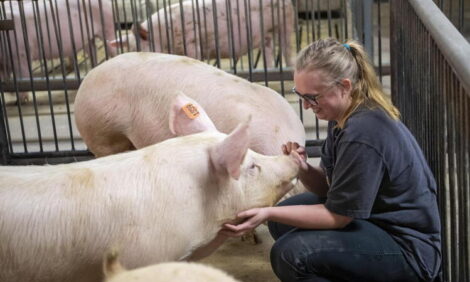



Solving Tail-Biting Problems
From Pork Information Gateway. Todd See gives an overview of the environmental, management and nutritional causes of tail-biting.Outbreaks of tail-biting occur in intensive pork production when a pig bites or chews on another pigs tail leading to a wound and bleeding. This abnormal social behaviour is usually associated with deficiencies in the pigs environment, management or nutrition.

Picture: National Pork Board
To solve a tail-biting problem promptly remove and treat the tail-bitten pig(s). Then review the following questions and determine the most likely causes. If tail-biting continues check other likely causes until the problem disappears.
Environmental Causes of Tail-Biting
- Is the building temperature appropriate for the age and weight of the pigs?
- Is the ventilation system functioning properly?
- Are pigs following appropriate dunging behavior?
- Is the building air quality (ammonia and hydrogen sulphide levels) satisfactory?
- Are pens dry?
Management Causes of Tail-Biting
- Are pigs overcrowded?
- Can pigs lie comfortably?
- Has mixing of pigs between pens occurred?
- Is the electrical supply properly grounded and stray voltage eliminated?
Nutritional Causes of Tail-Biting
- Was the feed properly formulated for levels of salt and other vitamins and minerals?
- Are there a sufficient number of drinkers with adequate flow rate per pen?
- Is there adequate feeder space?
October 2008







